In total, a new garden culture can be found in the cottage. This is a leek. It appeared in Russia relatively recently - in the middle of the last century. This is an ancient culture that is widespread in many countries. Luca's popularity is huge, it can be fresh, dried, marinate, saline and freeze. Each wishing to grow leek at its summer cottage, because this garden culture is not capricious and adapt to a moderate climate.
In Europe, the onions are called "pearls" due to the large content of nutrients. Much value has the base of the white stem. The taste of him is weak with a light ed. In Luka, a large amount of vitamin C is contained, so the stems include in the composition of obesity diets, to maintain the body during the exacerbation of diseases such as atherosclerosis, renal disease, during the failures of the liver.
The leek can be called a universal product not only due to the fact that it can be used in any form. There are two more features of this plant: the first - onions can be raised in any soil, it is not afraid of temperature drops, and even after the harvest is assembled, there are many useful substances in it. In addition, when stored, the amount of this vitamin only increases (the stems "divide" with nutrients with the "leg").
Of particular value is the bleached stem or "leg", it is also called "false". Stems can be eaten throughout the entire vegetation period. Try to collect only young onion shoots, they are very tasty and juicy. From young leaves you can make nutritious salads or cook delicious and useful soup. They contain a large number of potassium, which activates the metabolism.
Leek. Photo:
How to grow leeks from seeds
This is a two-year plant. In the first year after landing, a medium bulb with a dense stem of a light shade and leaves is formed. The length of the stem can reach up to 70 cm (it depends on the plant variety), the diameter of the "legs" ranges from 3 to 10 cm.
It is possible to distinguish the arrangement of a bow-row on the basis of the leaves - the early grades are distinguished by a light tint of "feathers", but ripening late plants will have dark staining stalks.
An annual plant can be eaten, and completely all parts of the bow. Young shoots use a long period (added to salads, the first dishes are boiled). When the stem and bulb matures (with the onset of autumn) - you can assemble the harvest and stock up with vitamins for the winter.
The second year differs from the previous one that the plant forms the arrow of the circular shape. Its color can be white or lilac. Subsequently, the ball will turn into a seed box with small black branches.
Growing onion-sowing. Recommendations
It is best to grow onions from seeds, but for this they need to be properly prepared. If you do everything according to our advice, the seeds will be able to maintain the germination of up to 3 years.
It is important to properly prepare landing material. In order for seeds to be active, they must be eaten or disinfected.
How it's done:
- Take 2 deep bowls.
- Pour hot water into one container to another - cold.
- Seeds Put for 20 minutes in a bowl of hot water (temperature + 40-43 oWITH).
- Then the water needs to be merged, and seeds to shift into a bowl with cold water.
If you wish to get a good germination, then do not be lazy to germinate seeds. They need to put the flat cloth (as a handkerchief), moisten the napkin with water (temperature +25 oC maximum) and put seeds on the fabric. Leave such a mini-greenhouse is needed for 3 days, after which they are desirable to dry up to be more convenient to be in the soil. These rules must be followed if you have collected seeds from your site yourself. In the case when the seeds are bought in a specialized store, they are not necessarily treated, but you can germinate. If you have never grown this garden culture yourself, then we suggest to stop your choice on early varieties, such as Columbus or Goliath.
Since the growing period lasts within 200 days, then leek must be grown from seedlings. Prepared seeds can be sowed to special boxes for seedlings in late February or early March. It is necessary to fill the container half the ground (a mixture of sand and a delicate earth, the proportions are as follows: 1 part of the sand and 2 parts of the soil). It is very important to comply with the recommendations on the crop, so that the grains are distributed in the soil evenly. In the future, when seedlings are strengthened, it is undesirable to dive, as young shoots can die.
Little trick - when you sow seeds, put a thin layer of snow on the soil (up to 2 cm) and press it with soil with a painting roller. Next, very quickly you need to sow seeds. As they are dark, then on the white snow the planting material is clearly visible, because our task is observance of the distance. Between the grains there should be a space of 2 cm, and between the rows - 4 cm.
After landing, when the snow is absorbed into the soil, it is desirable to spray with a dry ground, a thin layer (up to 1 cm). Next, we act according to the classical planting scheme of plants and onions-row: we water the indentioned water temperature and cover the bins with the planting material with dense polyethylene or glass to create a greenhouse effect.
In order to grow high-quality and strong seedlings, and in the future to collect a good crop of the onion, it is necessary to observe the temperature regime in the room. So, the air temperature during the daytime should not be lowered below +18 oC, and at night +14 oWITH.
A week later, shoots should appear, just when you see the first green stems, it's time to start hardening procedures. Boxes with seedlings for the night you need to put in a cold place (temperature up +16 oWITH). This will help you grow high-quality seedlings without shorting.
So that the seedlings of the bow did not fall (they are very thin and fragile), try to plunge the earth more often. If you do it regularly, the bulb will be formed correctly, it will be dense with a long stem.
When growing seedlings, it is important to abundantly water the onions and make feeding. Every 2 weeks you need to make any universal fertilizer (only a concentration must be reduced in order not to get seedlings).
After 50 days, when the seedlings grow up and strengthened, you can land onions in open ground.
Hardening of the seedlings of the onion-row:
- a week before disembarking in open ground, take out drawers with seedlings to the street;
- first you need to leave seedlings for 2 hours on the street. Choose a place in the shade so that the sun does not fight young shoots;
- every day, the duration of the stay of Luke-Soon on the street should be increased for several hours;
- for the week, seedlings should get used to new weather conditions and staying in the air whole day.
Leek. Growing and care
In order to have questions from growing this garden culture, you do not have any questions how to grow leeks, we suggest familiarizing yourself with these recommendations:
- Do not forget for the fertilizer of the soil. For growing onions, it is suitable: wood ash, sawdust, compost or mineral fertilizers. You can make a mix of useful components. For example, take 2 banks (liter) sawdust, pour some water so that they become wet, and add 500 ml of wood ash. If you use mineral fertilizers to enrich the soil, add some urea.
- It is important after making feeding to switch well with the soil (depth up to 20 cm).
- When landing, first, make a groove with a recess to 10-12 cm.
- Distances between rows - 25 cm.
- Luke landing time - beginning of May.
- Predecessors - cucumbers, tomatoes, cabbage, potatoes and legumes.
- Before boarding the roots, you need to cut a little and put in the nutritional mixture. Take the same amount of cow and clay, mix and lower the root part into the chatter.
- In the prepared hole (depth of 10 cm) put overwhelming compost or manure.
- Seedlings are planted 1 unit in the hole, the roots need to sprinkle the earth and pour water abundantly.
There are several lake landing schemes:
- Double-row - seedlings are planted at a distance of 20 cm. The width between the rows of 30 cm.
- The multi-row - between the seedlings, retreat 10 cm, between the rows - 30 cm.
According to experienced gardens, leeks are best grown on a narrow bed, like all vegetables. Between the rows to save place, you can plant beets, celery, onions, strawberries or carrots.
Leek. Care
It is not difficult to care for the plant, you need to water the onions, loosen the earth and remove weeds. If the height of the garden culture allows, then you can loosen the soil and dip in order to sprinkle the bottom sheets. It turns out that the lower part of the plant will be underground, which will allow to obtain juicy and long stems, and most importantly - bleached. In the season you can dip the soil up to 4 times.
Leek loves light and moisture very much, so it must be constantly watered with water (it must be accustomed and warm). In drought watering the plant needed every 5 days, 1 m 2 20 l is enough water. After planting seedlings into open ground, the first time to make fertilizers is permitted 20 days later.
If the plants are high, it is necessary to dip the soil and fill the land trenches. To preserve a long "leg" and make high-quality whitening, you will not cost one submetroce. Therefore, you can do this: take dark paper (black or blue) and wrap the leg with this material.
Harvesting
A feature of this plant is the permanent increase of leaves. Literally to deep autumn, you can shoot young leaves from the stem. Onions perfectly withstands cold, even the first frosts (up to -1 oC) He is not terrible. But still it is necessary to adhere to the timing of harvest - at the end of October, to catch up to frosts, you need to dig a bow.
Digging the plant is best not a shovel, but forks to not damage the bulbs. After the crop is assembled, it is necessary to shake the ground and cut the roots to the centimeter. The leaves are also desirable to cut, leave only 1/3. Large stems can not trim so much, leave the stem length up to 30 cm.
After digging, the onions are disassembled into separate parts and dry. The container is suitable, fill the container with wet river sand. Having deepened the plant in the sand, you save the fresh leek until the spring (in the basement or on a warmed loggia). The stems will continue a large amount of vitamin C, even more than when harvesting.
Damaged when cleaning the leaves do not hurry to throw away, they also represent a greater nutritional value for a person. Wash them, dry and grind. Such a product is used as seasonings or as replacing breadcrumbs.
How to grow onions on the windowsill
If there is a huge desire in the cold season, replenish the stocks of vitamins, you can grow onions on their own on the windowsill. Go to the store and select a large onion root with long roots. Put the stalk into a glass with water. The fluid needs to be completely slightly, only 1 cm. Every day the water should be changed to the new (warm and resistant).
A week later, when you see the appearance of the first green sprouts from the central part of the stem, you can transplant the plant in the pot with the ground (the soil choose the light and fertile).
After a few weeks, the onions will grow by 30 cm, and literally a month after the transplant to the pot, you can cut the fresh leaves. Do not forget to pull the bright part of the stem as the plant groves.
The fresh cut stems of the onion can be immediately eaten or sent to short-term storage in the refrigerator. To do this, simply wrap the leaves into a polyethylene film with holes. In 1 package Put 5 pieces of leaves. Store the plant is best at temperatures +2 oWith and humidity of air to 80%.
You can easily grow onion on your summer cottage, if you comply with all subtleties when sowing seeds and disembarking into the soil seedlings. The plant is unpretentious in care, is not afraid of diseases and pests.
How to grow leek. Video:

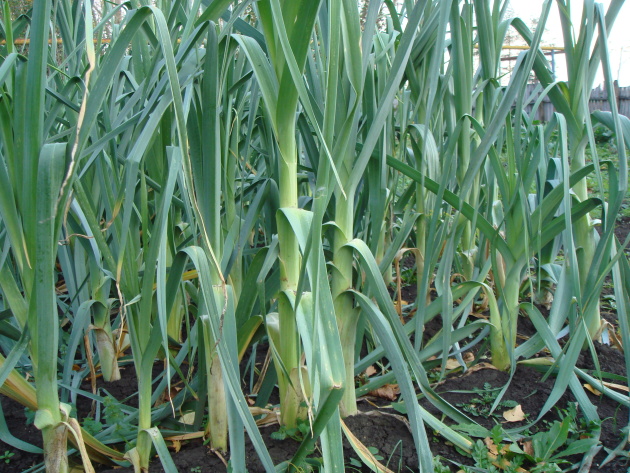
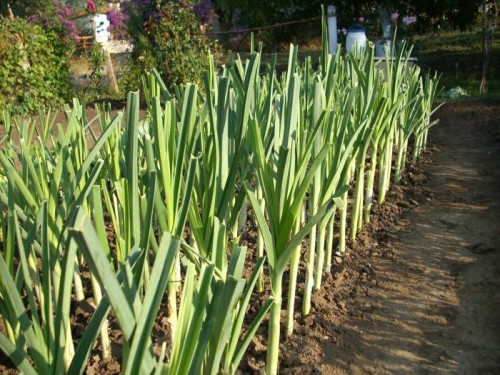
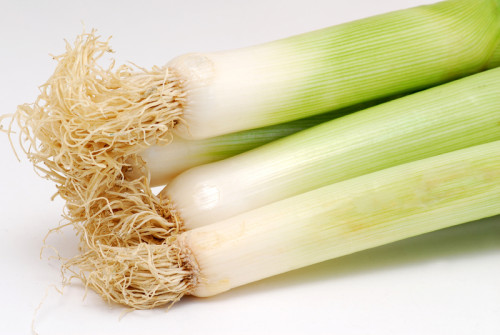
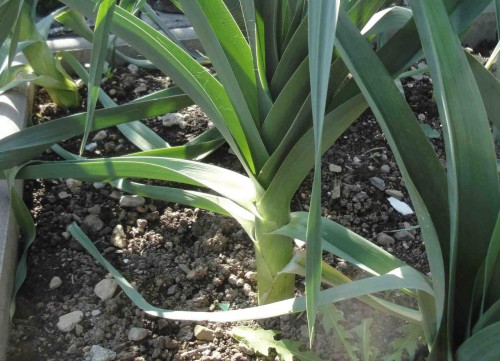
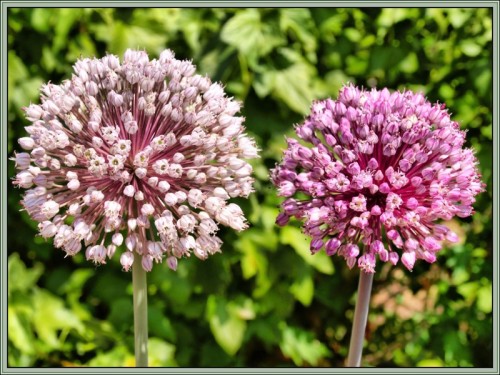
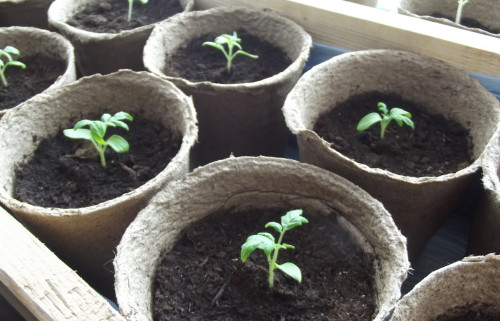
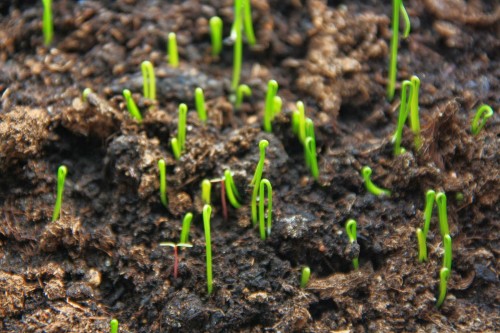
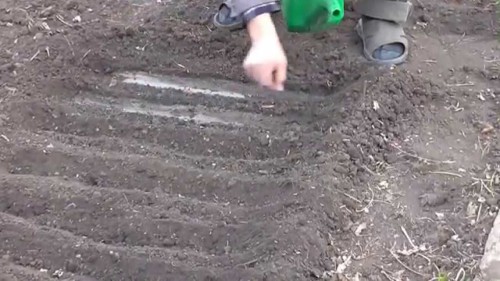
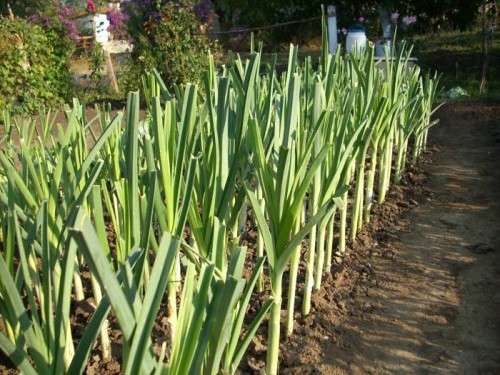
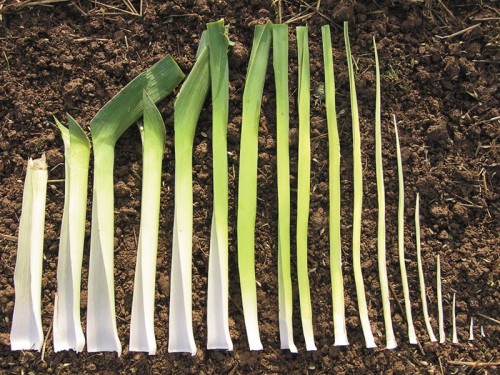
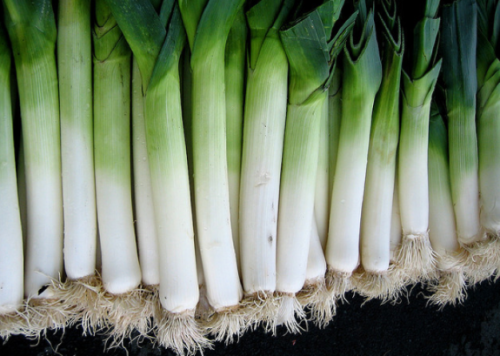

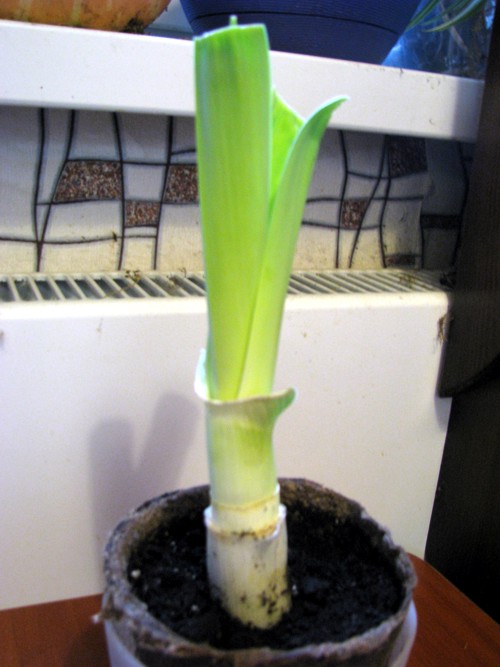












 Start a discussion ...
Start a discussion ...